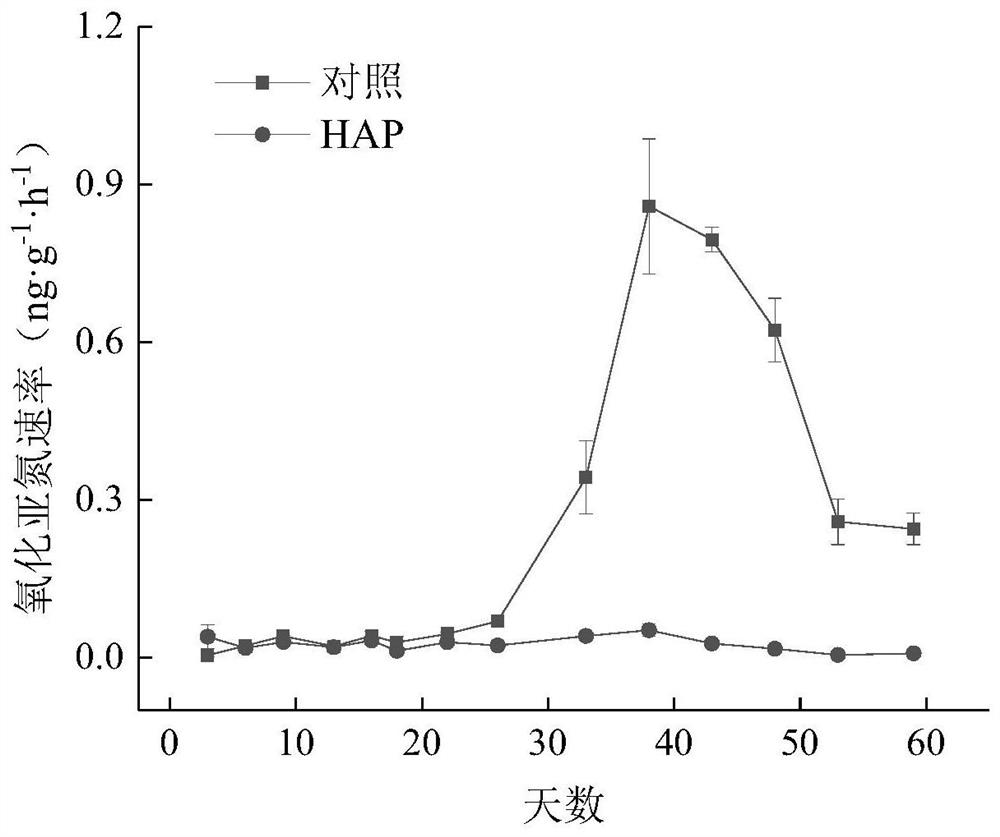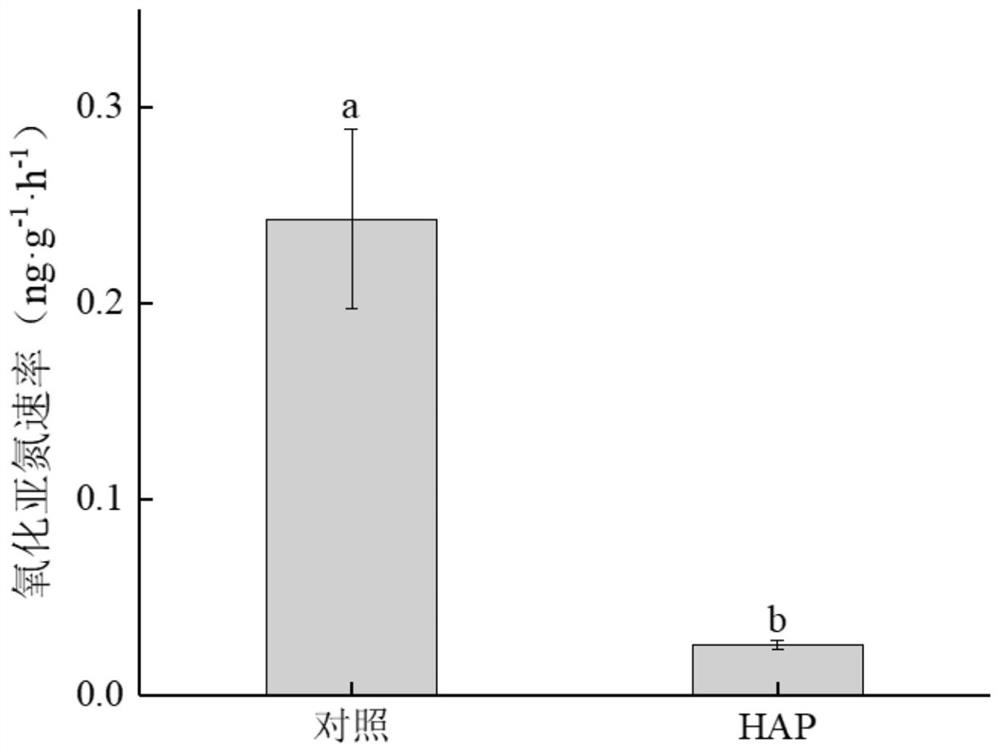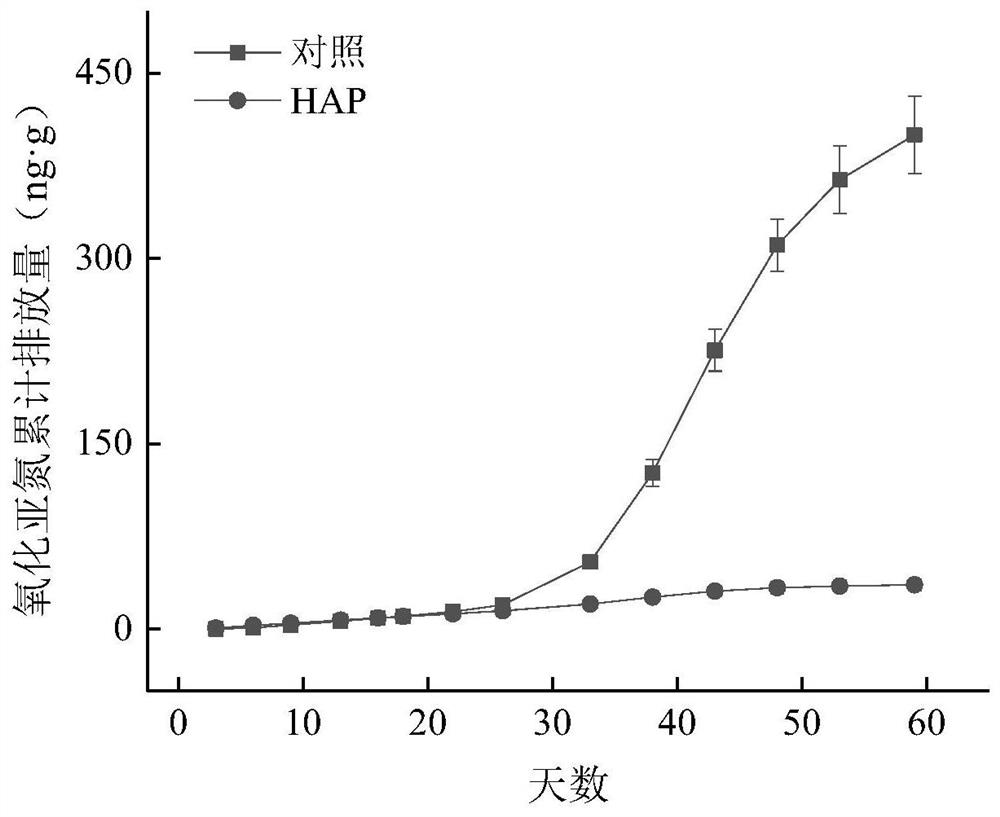A method for reducing greenhouse gas emission in heavy metal polluted soil
A greenhouse gas and soil technology, applied in the restoration of polluted soil, etc., can solve the problems of poor soil application effect, short duration, and large variation in emission reduction effects, and achieve the effect of heavy metal pollution control and reduced emissions
- Summary
- Abstract
- Description
- Claims
- Application Information
AI Technical Summary
Problems solved by technology
Method used
Image
Examples
Embodiment 1
[0024] Hydroxyapatite (HAP) is mainly prepared from calcium nitrate and phosphoric acid by a sol-gel method. The main operation steps are:
[0025] 1. Prepare 0.025mol / L Ca(NO 3 ) 2 and 0.3mol / L of H 3 PO 4 solution. First, the Ca(NO 3 ) 2 The solution was poured into a three-necked flask, and H was added while stirring. 3 PO 4 Solution (Ca(NO 3 ) 2 solution and H 3 PO 4 The volume ratio of the solution is 2:1), and the temperature of the system is maintained at 40-50 °C.
[0026] 2. Add ammonia water to adjust the pH of the solution so that the pH value is controlled at 10.00. After the dropwise addition was completed, the reaction was continued for 40 min, and then aged for 24 h.
[0027] 3. The colloid obtained after the reaction was washed three times with distilled water and suction filtered to obtain a filter cake, which was dried in a drying oven at 80°C.
[0028] 4. Grind the dried filter cake, and then use a muffle furnace for calcination for 12h (3h at...
Embodiment 2
[0031] 1. Prepare 0.025mol / L Ca(NO 3 ) 2 and 0.3mol / L of H 3 PO 4 solution. First, the Ca(NO 3 ) 2 The solution was poured into a three-necked flask, and H was added while stirring. 3 PO 4 Solution (Ca(NO 3 ) 2 solution and H 3 PO 4 The volume ratio of the solution is 2:1), and the temperature of the system is maintained at 40-50 °C.
[0032] 2. Add ammonia water to adjust the pH of the solution, so that the pH value is controlled at 9.00. After the dropwise addition, the reaction was continued for 40 min, and then aged for 36 h.
[0033] 3. The colloid obtained after the reaction was washed 4 times with distilled water and suction filtered to obtain a filter cake, which was dried in a drying oven at 80°C.
[0034] 4. Grind the dried filter cake, and then use a muffle furnace for calcination for 12h (3h at room temperature to 600°C, calcined at 600°C for 9h), and then grind again after calcination to obtain HAP powder, pass 180 mesh Save after sieving.
[0035] ...
Embodiment 3
[0037] 1. Prepare 0.025mol / L Ca(NO 3 ) 2 and 0.3mol / L of H 3 PO 4 solution. First, the Ca(NO 3 ) 2 The solution was poured into a three-necked flask, and H was added while stirring. 3 PO 4 Solution (Ca(NO 3 ) 2 solution and H 3 PO 4 The volume ratio of the solution is 2:1), and the temperature of the system is maintained at 40-50 °C.
[0038] 2. Add ammonia water to adjust the pH of the solution so that the pH value is controlled at 11.00. After the dropwise addition was completed, the reaction was continued for 40 min, and then aged for 24 h.
[0039] 3. The colloid obtained after the reaction was washed 5 times with distilled water and suction filtered to obtain a filter cake, which was dried in a drying oven at 80°C.
[0040] 4. Grind the dried filter cake, and then use a muffle furnace for calcination for 12h (3h at room temperature to 600°C, calcined at 600°C for 8h), and then grind again after calcination to obtain HAP powder, over 180 mesh Save after sievi...
PUM
 Login to View More
Login to View More Abstract
Description
Claims
Application Information
 Login to View More
Login to View More - R&D
- Intellectual Property
- Life Sciences
- Materials
- Tech Scout
- Unparalleled Data Quality
- Higher Quality Content
- 60% Fewer Hallucinations
Browse by: Latest US Patents, China's latest patents, Technical Efficacy Thesaurus, Application Domain, Technology Topic, Popular Technical Reports.
© 2025 PatSnap. All rights reserved.Legal|Privacy policy|Modern Slavery Act Transparency Statement|Sitemap|About US| Contact US: help@patsnap.com



